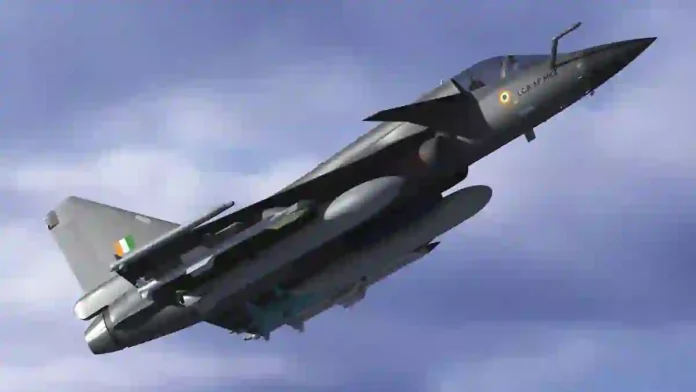The TEJAS MK-2, also known as Medium Weight Fighter (MWF), is a 4.5 generation indigenous Indian multi-role combat aircraft developed by Hindustan Aeronautics Limited (HAL) in collaboration with the Defence Research and Development Organisation (DRDO) and the Aeronautical Development Agency (ADA).
Designed to replace multiple older strike fighters in the Indian Air Force (IAF) like the SEPECAT Jaguar, Mirage 2000, and MiG-29, the TEJAS MK-2 incorporates a significant amount of indigenous technology, with initial indigenous content around 82% expected to increase beyond 90% after engine production licensing. The aircraft is planned to be rolled out by 2025 and enter mass production by 2029.
Read- Why India Fell Behind in Getting Enough Fighter Jets?
A key aspect of the TEJAS MK-2 is its configuration to carry a versatile and advanced suite of indigenous weapons, boosting India’s self-reliance in defence capabilities. Prominent in this arsenal are the DRDO-developed Astra family of beyond-visual-range (BVR) air-to-air missiles, including variants like Astra MK-1 (with a range over 100 km), Astra MK-2 (130-160 km range), and the upcoming Astra MK-3 (Gandiva) with an extended range around 340 km. These ensure formidable stand-off aerial engagement capabilities that are essential for air superiority.
Six key Made-in-India technologies integrated into the TEJAS MK-2 include:
- Uttam AESA Radar: Developed by DRDO’s Electronics and Radar Development Establishment (LRDE), the Uttam Active Electronically Scanned Array radar provides advanced multi-target tracking, electronic warfare integration, and beyond-visual-range engagement capability. It reduces dependence on imported radar systems and is currently in flight trials as of 2025.
- Indigenous Mission Computer: HAL (Hindustan Aeronautics Limited) and DRDO have jointly developed an open-architecture mission computer for the TEJAS MK-2. This system integrates sensor fusion, weapon control, and navigation functionalities, enabling seamless upgrades without foreign dependencies.
- Electronic Warfare Suite: Designed by DRDO’s Defence Avionics Research Establishment, this electronic warfare (EW) suite provides radar warning, threat jamming, and countermeasure deployment. It enhances survivability in hostile environments and is fully integrated with the aircraft’s sensors.
- Fly-By-Wire Flight Control System: The MK-2 is equipped with an Indian-developed digital quadruplex fly-by-wire system. It offers enhanced handling at high angles of attack, greater stability during combat manoeuvres, and multiple redundancies for safety, reflecting India’s advanced avionics capability.
- Indigenous Cockpit Display Systems: HAL and Bharat Electronics Limited (BEL) have developed wide-area multifunction cockpit displays for a glass cockpit interface. These displays improve situational awareness and are compatible with helmet-mounted displays, facilitating pilot access to critical mission data.
- Indian Smart Weapons Integration: The TEJAS MK-2 is configured to carry indigenous armaments such as the Astra beyond-visual-range air-to-air missile, Smart Anti-Airfield Weapons (SAAW), and laser-guided bombs developed by DRDO. This integration supports a fully Indian weapons package, reducing reliance on imported munitions.
Read- No F-35 Formal Fighter Jets Discussions With US: Centre To Lok Sabha
Read- India Prepares to Hunt With The Fastest Missiles In The World Under Project Kusha
Additional notable features and developments include the use of the more powerful General Electric F414-INS6 engine for the MK-2, and plans to replace it eventually with the indigenous Kaveri jet engine variant, aiming for even greater self-reliance.
These technologies collectively enhance the combat capabilities, survivability, and operational flexibility of the TEJAS MK-2, positioning it as a significant advancement over the original TEJAS, with about 82% indigenous content at introduction, expected to rise above 90% in later production.
The TEJAS MK-2 is slated for prototype rollout by late 2025 and first flight in 2026, aiming for mass production and induction into the Indian Air Force by 2028-29.
The integration of these six key Made-in-India systems underscores the strategic thrust on indigenisation in India’s aerospace and defence sectors through the TEJAS MK-2 program.
Based On WION Report
Agency




